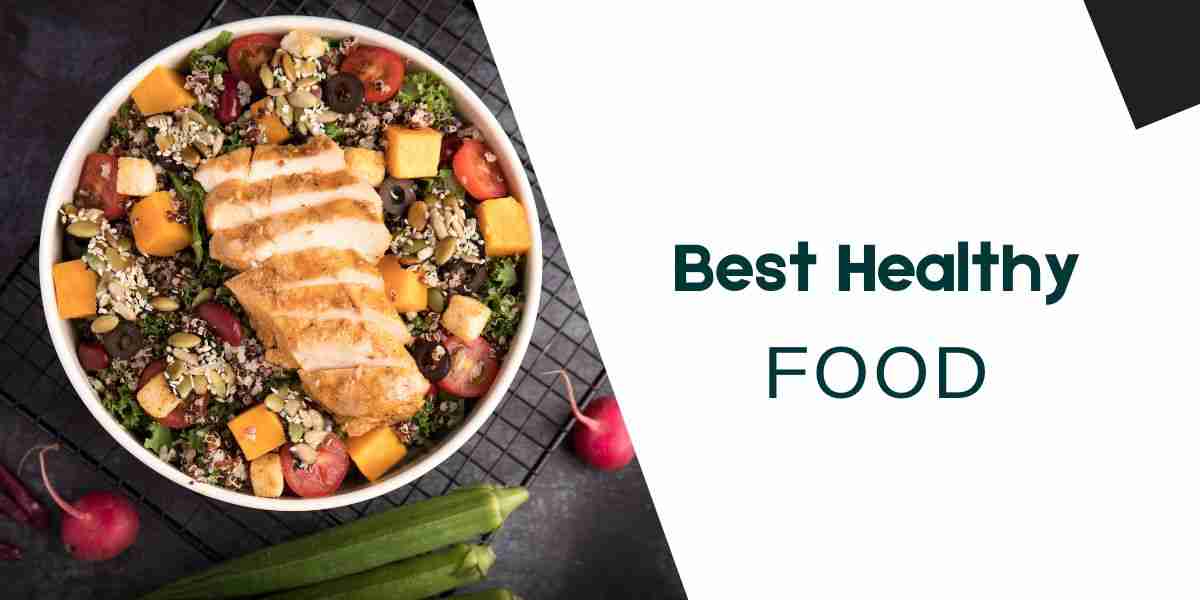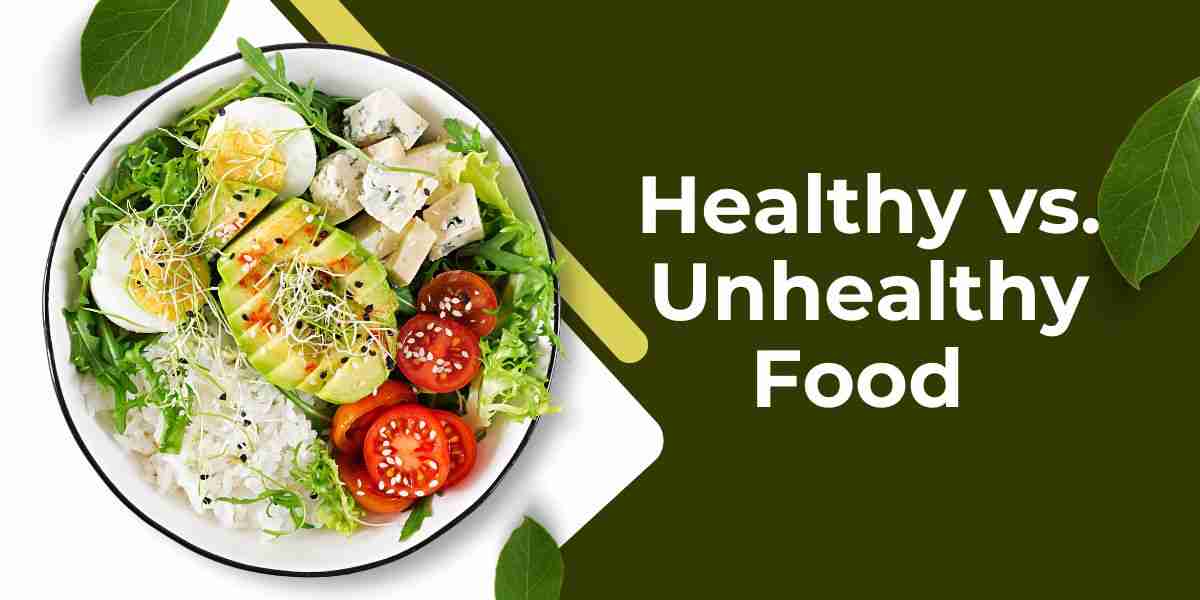Healthy vs. Unhealthy Food Sorting: A Guide to Better Eating: Eating the right foods is essential for maintaining good health, but with so many choices available, it can be difficult to distinguish between healthy and unhealthy foods. Healthy vs. Unhealthy Food Sorting: A Guide to Better Eating Understanding how to sort foods effectively can help you make better dietary decisions for yourself and your family. In this guide, we’ll break down how to identify healthy and unhealthy foods, why it matters, and some practical tips to help you make healthier choices every day. Healthy vs. Unhealthy Food Sorting: A Guide to Better Eating.
What Is Healthy Food?
Healthy foods are nutrient-dense and provide essential vitamins, minerals, and other beneficial compounds without excessive amounts of unhealthy fats, sugar, and artificial additives. Some examples include:
- Fruits and Vegetables – Rich in vitamins, fiber, and antioxidants.
- Whole Grains – Such as brown rice, quinoa, oats, and whole-wheat products.
- Lean Proteins – Like chicken breast, turkey, fish, tofu, and legumes.
- Healthy Fats – Found in avocados, nuts, seeds, and olive oil.
- Dairy or Dairy Alternatives – Low-fat milk, yogurt, and plant-based options like almond or soy milk.

What Is Unhealthy Food?
Unhealthy foods are often high in calories, unhealthy fats, refined sugars, and artificial ingredients while lacking essential nutrients. Some examples include:
- Processed and Fast Foods – Burgers, fries, and frozen meals high in sodium and preservatives.
- Sugary Snacks and Beverages – Sodas, candies, pastries, and energy drinks that contribute to weight gain and other health issues.
- Refined Carbohydrates – White bread, pasta, and sugary cereals that cause blood sugar spikes.
- Trans Fats and Saturated Fats – Found in fried foods, margarine, and certain packaged snacks.
- High-Sodium Foods – Chips, processed meats, and canned soups that may increase the risk of high blood pressure.
Why Sorting Healthy and Unhealthy Foods Matters
Sorting your foods correctly can:
- Improve digestion and energy levels.
- Support weight management.
- Reduce the risk of chronic diseases like diabetes and heart disease.
- Enhance brain function and mood.

Practical Tips for Sorting and Choosing Healthier Options
- Read Nutrition Labels – Check ingredients, sugar, sodium, and fat content before purchasing.
- Choose Whole Over Processed – Opt for fresh fruits, vegetables, and whole grains instead of packaged and refined options.
- Cook at Home – Homemade meals allow you to control ingredients and portion sizes.
- Limit Added Sugars and Salt – Reduce your intake of processed foods with high sugar and sodium content.
- Stay Hydrated – Drink water instead of sugary beverages like soda and flavored drinks.
- Plan Your Meals – Preparing meals in advance helps prevent unhealthy food choices when you’re in a rush.
Conclusion
Sorting foods into healthy and unhealthy categories is an essential step in making smarter dietary choices. By focusing on whole, nutrient-rich foods and limiting processed and sugary options, you can improve your overall health and well-being. Start making small changes today, and enjoy the long-term benefits of a balanced diet!
Faq
Healthy food vs junk food 10 Lines?
- Healthy food includes fruits, vegetables, whole grains, and lean proteins, while junk food is high in sugar, unhealthy fats, and processed ingredients.
- Healthy food provides essential nutrients, whereas junk food lacks vitamins and minerals.
- Eating healthy foods boosts immunity and overall well-being, while junk food increases the risk of diseases.
- Junk food often contains artificial additives and preservatives, which can be harmful.
- Healthy food supports weight management, whereas junk food can lead to obesity.
- Eating nutritious food improves brain function and energy levels, while junk food causes fatigue.
- Junk food can lead to heart disease, diabetes, and high blood pressure over time.
- Healthy eating habits promote better digestion and a stronger metabolism.
- Junk food is tempting due to its taste and convenience but lacks long-term health benefits.
- Choosing healthy food over junk food leads to a happier, longer, and more active life.
Here is a simple comparison chart between Healthy Food and Junk Food:
| Category | Healthy Food 🥦🍎 | Junk Food 🍕🍩 |
| Nutritional Value | High in vitamins, minerals, and fiber | Low in nutrients, high in empty calories |
| Ingredients | Natural, fresh, and whole foods | Processed, artificial additives, and preservatives |
| Health Benefits | Boosts immunity, improves digestion, and strengthens the body | Increases risk of obesity, diabetes, and heart disease |
| Energy Levels | Provides sustained energy | Causes energy spikes and crashes |
| Effect on Weight | Helps maintain a healthy weight | Leads to weight gain and obesity |
| Brain Function | Improves memory and concentration | Can lead to brain fog and sluggishness |
| Examples | Fruits, vegetables, nuts, lean meats, whole grains | Chips, soda, burgers, fries, candies |
| Taste | Natural and fresh flavors | Often salty, sugary, or highly processed flavors |
| Long-term Impact | Increases lifespan and quality of life | Leads to health complications over time |
| Availability | Requires preparation, available in grocery stores | Easily available in fast-food chains and vending machines |
Healthy Food vs. Junk Food
Food plays a vital role in maintaining a healthy lifestyle. The choices we make regarding our diet significantly impact our overall well-being. While some foods provide essential nutrients that nourish our body, others may be harmful and lead to health issues. Two major categories of food are healthy food and junk food. Understanding their differences can help us make better dietary decisions.
What is Healthy Food?
Healthy food consists of natural, unprocessed, and nutrient-rich items such as fruits, vegetables, whole grains, lean proteins, and nuts. These foods supply essential vitamins, minerals, fiber, and antioxidants that help in proper body functioning. Consuming healthy food strengthens the immune system, promotes better digestion, improves brain function, and helps maintain an ideal weight. Examples of healthy foods include apples, spinach, brown rice, salmon, and almonds.
What is Junk Food?
Junk food refers to processed, high-calorie foods that contain excessive amounts of sugar, unhealthy fats, and artificial additives. These foods lack essential nutrients and often contribute to various health problems like obesity, diabetes, and heart disease. Common examples of junk food include chips, soda, candy, burgers, fries, and pastries. Junk food is typically appealing due to its taste, affordability, and convenience, but its long-term consumption can lead to severe health complications.
Comparison Between Healthy Food and Junk Food
- Nutritional Value: Healthy food is rich in essential nutrients, while junk food contains empty calories and lacks nourishment.
- Effect on Health: Eating healthy food boosts immunity and reduces disease risk, whereas junk food can lead to obesity, heart disease, and diabetes.
- Energy Levels: Nutritious food provides sustained energy, while junk food causes energy spikes followed by fatigue.
- Weight Management: A balanced diet helps maintain a healthy weight, whereas excessive junk food consumption leads to weight gain.
- Long-Term Benefits: Healthy food supports long-term well-being, while junk food may cause chronic health issues over time.
Healthy Food vs. Unhealthy Food
Food plays a vital role in maintaining a healthy lifestyle. The choices we make regarding our diet significantly impact our overall well-being. While some foods provide essential nutrients that nourish our body, others may be harmful and lead to health issues. Two major categories of food are healthy food and unhealthy food. Understanding their differences can help us make better dietary decisions.
What is Healthy Food?
Healthy food consists of natural, unprocessed, and nutrient-rich items such as fruits, vegetables, whole grains, lean proteins, and nuts. These foods supply essential vitamins, minerals, fiber, and antioxidants that help in proper body functioning. Consuming healthy food strengthens the immune system, promotes better digestion, improves brain function, and helps maintain an ideal weight. Examples of healthy foods include apples, spinach, brown rice, salmon, and almonds.
What is Unhealthy Food?
Unhealthy food refers to processed, high-calorie foods that contain excessive amounts of sugar, unhealthy fats, and artificial additives. These foods lack essential nutrients and often contribute to various health problems like obesity, diabetes, and heart disease. Common examples of unhealthy food include chips, soda, candy, burgers, fries, and pastries. Unhealthy food is typically appealing due to its taste, affordability, and convenience, but its long-term consumption can lead to severe health complications.
Comparison Between Healthy Food and Unhealthy Food
- Nutritional Value: Healthy food is rich in essential nutrients, while unhealthy food contains empty calories and lacks nourishment.
- Effect on Health: Eating healthy food boosts immunity and reduces disease risk, whereas unhealthy food can lead to obesity, heart disease, and diabetes.
- Energy Levels: Nutritious food provides sustained energy, while unhealthy food causes energy spikes followed by fatigue.
- Weight Management: A balanced diet helps maintain a healthy weight, whereas excessive unhealthy food consumption leads to weight gain.
- Long-Term Benefits: Healthy food supports long-term well-being, while unhealthy food may cause chronic health issues over time.
How to Eat Healthy Food Every Day
- Plan Your Meals: Preparing a meal plan helps ensure a balanced and nutritious diet.
- Incorporate More Vegetables and Fruits: Aim to fill half your plate with fresh fruits and vegetables.
- Choose Whole Grains: Opt for whole wheat, brown rice, and quinoa instead of refined grains.
- Eat Lean Proteins: Include sources like fish, chicken, beans, and nuts in your meals.
- Avoid Processed Foods: Minimize consumption of packaged and fast foods.
- Stay Hydrated: Drink plenty of water instead of sugary beverages.
- Cook at Home: Preparing meals at home allows you to control ingredients and portion sizes.
- Snack Wisely: Choose healthy snacks like yogurt, nuts, or fruit instead of chips or candy.
- Read Food Labels: Check nutritional information to avoid high sugar, sodium, and unhealthy fats.
- Practice Portion Control: Eating in moderation helps prevent overeating and maintains a balanced diet.
Conclusion
Choosing between healthy food and unhealthy food is a crucial decision that affects our overall health and quality of life. While unhealthy food may be tasty and convenient, it lacks the necessary nutrients our body needs. On the other hand, healthy food nourishes our body, enhances physical and mental well-being, and ensures a longer, healthier life. Therefore, it is important to adopt a balanced diet that prioritizes healthy food while limiting the consumption of unhealthy food for a better future.
Related post :
CategoriesHealth care
